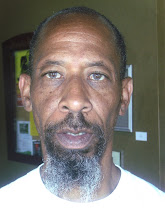Torrance T. Stephens1, Ronald Braithwaite1, Judy Lubin1, Sha Juan Colbert1 and Rudolph H. Carn2
| (1) | the Department of Behavioral Sciences And Health Education, Rollins School of Public Health of Emory University, USA |
| (2) | AIDS Education & Services for Minorities, Atlanta, GA, 2001 Martin Luther King, Jr. Drive, Suite 602, 30310 Atlanta, GA |
Conclusion To make health education efforts more effective with this population, researchers and health promotion professionals need to collect additional data to formulate health policy specific to AA male CSWs. While these findings support the current available research on the subject, little attention has been placed on addressing primary motives and their relationship to risk taking among the target population. We see that there is a strong need for new programmatic efforts in HIV/AIDS risk reduction that go beyond condom use and maintenance skills development. This implies that social outreach that provides CSWs with skills that assist in screening potential sex partners, based on their sexual preferences, may need to be tested and developed if we desire to curb the HIV/AIDS pandemic. Many of the CSWs were willing to participate in unsafe sex acts with the possibility of more money, which can be attributed to their desperate need for shelter or food. The homeless CSW population in the United States should be considered a high-risk group for HIV infection. They have obvious competing subsistence needs and other barriers that impact the practice of HIV/AIDS risk behaviors. Future interventions should be tailored to also address the social and economic situations of the men.
His current interests include Prostate Cancer and HIV/AIDS.
His current interests include minority health issues and HIV in prison. He has recently published Prisons and AIDS and several other books on minority health.
Her current interests include minority health issues.
Her current interests include minority health issues and HIV Prevention in adolescents.

No comments:
Post a Comment